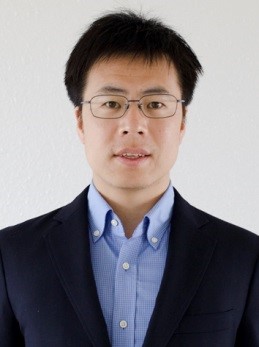1 Research Center for Materials Nanoarchitectonics (MANA), National Institute for Materials Science (NIMS), Namiki 1-1, Tsukuba, Ibaraki 305-0044, JAPAN
2 NIMS Joint Graduate School Program, University of Tsukuba
* Email: TANG.Daiming@nims.go.jp
Single-wall carbon nanotubes (SWCNTs) have a one-dimensional helical tubular molecular structure made up of hexagonally bonded sp2 carbon atoms. Conceptually, a SWCNT could be formed by rolling up a graphene sheet along a so-called chiral vector. The chirality of a SWCNT uniquely determines its atomic geometry and electronic structure, i.e. metallic or semiconducting. Currently, it is a great challenge to control the chirality of individual CNTs, hindering their applications in the promising energy-efficient nanotransistors.
In our work, we developed an in situ transmission electron microscopy (TEM) probing method to monitor the chirality transition and transport properties of individual CNTs. The changes of tube structure including the chirality are stimulated by programmed bias pulses and associated Joule heating. The chirality change is analyzed by nanobeam electron diffraction. The electronic transport properties are measured along with the structural changes, via fabricating transistors using the individual nanotubes as the suspended channels.1
A transition trend towards larger chiral angle region was observed and explained in terms of orientation-dependent dislocation formation energy. Controlled metal-to-semiconductor transition was realized to create nanotube transistors with a semiconducting nanotube channel covalently bonded between metallic nanotube source and drain. In addition, quantum transport at room temperature was demonstrated for the fabricated nanotube transistors with the channel length down to 2.8 nanometers.2
In this talk, the progresses of the CNT chirality engineering will be summarized. I will discuss about the new understanding of the atomic mechanism and thermal properties of the CNT molecular junctions.3 And an outlook of the ultimate CNT electronics enabled by the chirality engineering will be presented4.
References:
1.Tang, D.-M.; Kvashnin, D. G.; Cretu, O.; Nemoto, Y.; Uesugi, F.; Takeguchi, M.; Zhou, X.; Hsia, F.-C.; Liu, C.; Sorokin, P. B.; Kawamoto, N.; Mitome, M.; Cheng, H.-M.; Golberg, D.; Bando, Y., Chirality transitions and transport properties of individual few-walled carbon nanotubes as revealed by in situ TEM probing. Ultramicroscopy 2018, 194, 108-116.
2.Tang, D.-M.; Erohin Sergey, V.; Kvashnin Dmitry, G.; Demin Victor, A.; Cretu, O.; Jiang, S.; Zhang, L.; Hou, P.-X.; Chen, G.; Futaba Don, N.; Zheng, Y.; Xiang, R.; Zhou, X.; Hsia, F.-C.; Kawamoto, N.; Mitome, M.; Nemoto, Y.; Uesugi, F.; Takeguchi, M.; Maruyama, S.; Cheng, H.-M.; Bando, Y.; Liu, C.; Sorokin Pavel, B.; Golberg, D., Semiconductor nanochannels in metallic carbon nanotubes by thermomechanical chirality alteration. Science 2021, 374 (6575), 1616-1620.
3.Cretu, O.; Tang, D.-M.; Lu, D.-B.; Da, B.; Nemoto, Y.; Kawamoto, N.; Mitome, M.; Ding, Z.; Kimoto, K., Nanometer-level temperature mapping of Joule-heated carbon nanotubes by plasmon spectroscopy. Carbon 2023, 201, 1025-1029.
4.Tang, D.-M.; Cretu, O.; Ishihara, S.; Zheng, Y.; Otsuka, K.; Xiang, R.; Maruyama, S.; Cheng, H.-M.; Liu, C.; Golberg, D., Chirality engineering for carbon nanotube electronics. Nature Reviews Electrical Engineering 2024.
Biography
 Daiming Tang is a Principal Researcher in Functional Nanomaterials Group, Research Center for Materials Nanoarchitectonics (MANA), National Institute for Materials Science (NIMS). He got PhD from Institute of Metal Research (IMR), Chinese Academy of Sciences (CAS) in 2010. His main research is in situ TEM investigations for nanostructures and nanodevices.
Daiming Tang is a Principal Researcher in Functional Nanomaterials Group, Research Center for Materials Nanoarchitectonics (MANA), National Institute for Materials Science (NIMS). He got PhD from Institute of Metal Research (IMR), Chinese Academy of Sciences (CAS) in 2010. His main research is in situ TEM investigations for nanostructures and nanodevices.
汤代明,2010年在中国科学院金属研究所获得材料学博士学位,目前是日本国立材料科学研究所(National Institute for Materials Science)研究员,JST“创发”研究员,筑波大学连携研究生导师。主要从事低维材料和器件的结构调控及物性-结构关系的原位电子显微学研究。代表性工作包括:通过原子级精密加工,获得了碳纳米管夹持金属原子链,发现其量子化电导特性;制作了沟道长度仅为2.8纳米的碳纳米管分子结晶体管,观测到室温量子干涉效应;系统研究了低维材料的力学性质,揭示了尺寸、表面、几何构型、缺陷等微观结构与力学性质的关系,提出了几何、缺陷强化机制。在Science、PNAS、Nat Commun、Nano Lett、JACS、ACS Nano等期刊发表论文100余篇,SCI引用10000余次,H因子约50。



